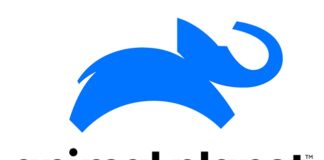For the first time since the 1980s, the initial public offering market in 1992 may have been a successful replication of an astrological flop of the late 1980s.
According to the individual who came up with the idea, the so-called “harmonic convergence” would allow “an unparalleled amount of energy to converge in one location and harmony with itself,” as he described it. The event, despite a large number of individuals holding hands and humming, was a failure.

IPO Universe Last Year
However, this was not the case in the IPO universe last year, as market forces aligned in a harmonious and lucrative way. As a result, 598 organisations raised $39.4 billion in new stock offerings, greatly above the previous record of $25.1 billion set by 402 companies in 1991. Nearly a quarter of 1992’s offers were filed by financial institutions like banks and investment funds.
Read Also:
Average Revenue
The average revenue generated by nonfinancial issuers was $202 million. Small firms weren’t completely barred from the market. A total of $518 million was raised by 41 companies with sales of less than $1 million, averaging $12.3 million per. A total of $9.8 million was invested in eight enterprises with no revenue.
Small-Capitalization Equities
Small-capitalization equities had a bull market that began in early 1990, and interest rates were low at the time. As the market’s rising P/E ratios and interest rates attracted more and more small-cap IPOs, there was a good supply of once-private companies to meet the demand.
It wasn’t until January 1992 that the first glimmer of an economic recovery sparked the market’s appetite for large IPOs, many of which were reverse leveraged buyouts, once-public companies that returned to the stock market and paid off the debt they had accrued when they were taken private by their owners.
Health-Care Issues
However, the second quarter saw a decline in interest in biotechnology and health-care issues as it became clear that Bill Clinton’s campaign against high health-care and medication costs could win him the presidency.
It really doesn’t matter. CrossCom (#40) and Starbucks (#93) were two of the best-performing IPOs of the year, gaining more than 100 percent and 117.6 percent, respectively, during the IPO slowdown of the summer, when the market saw $9.8 billion in new stock offerings.
The Fourth Quarter
In the fourth quarter, demand for small companies’ stocks soared because they don’t have a lot of shares to offer. Among the 15 restaurant IPOs, Lone Star Steakhouse emerged as the most successful, selling for 165 times earnings and a whopping 457 percent over its initial price of $63.
IPOs That Shone In 1992
Many of the IPOs that shone in 1992’s sky were again in the high-tech sector, which was no surprise to market watchers. Computer networking concerns were a natural extension of what they’ve been dealing with at work. In addition, five gambling-related offerings, including Casino Magic, which returned 360 percent before the new year, were encouraged by revisions in municipal regulations.
Read Also:
- Twitter Employees Search For Answers As Musk Takeover Becomes
- Women Tend To Reach Higher Bac Levels More Quickly Than Men Because:
Last Words
In general, new issues performed well in 1992. This index tracks the first six months of a company’s stock performance following an initial public offering, and it rose by 29.4 percent in the first half of 2013. The year was one that you may not see again in all those dimensions for a long time, according to insurer David DiPietro. His company, Alex. Brown & Sons, and the other investment bankers who made $2.4 billion in fees last year must be down.









































